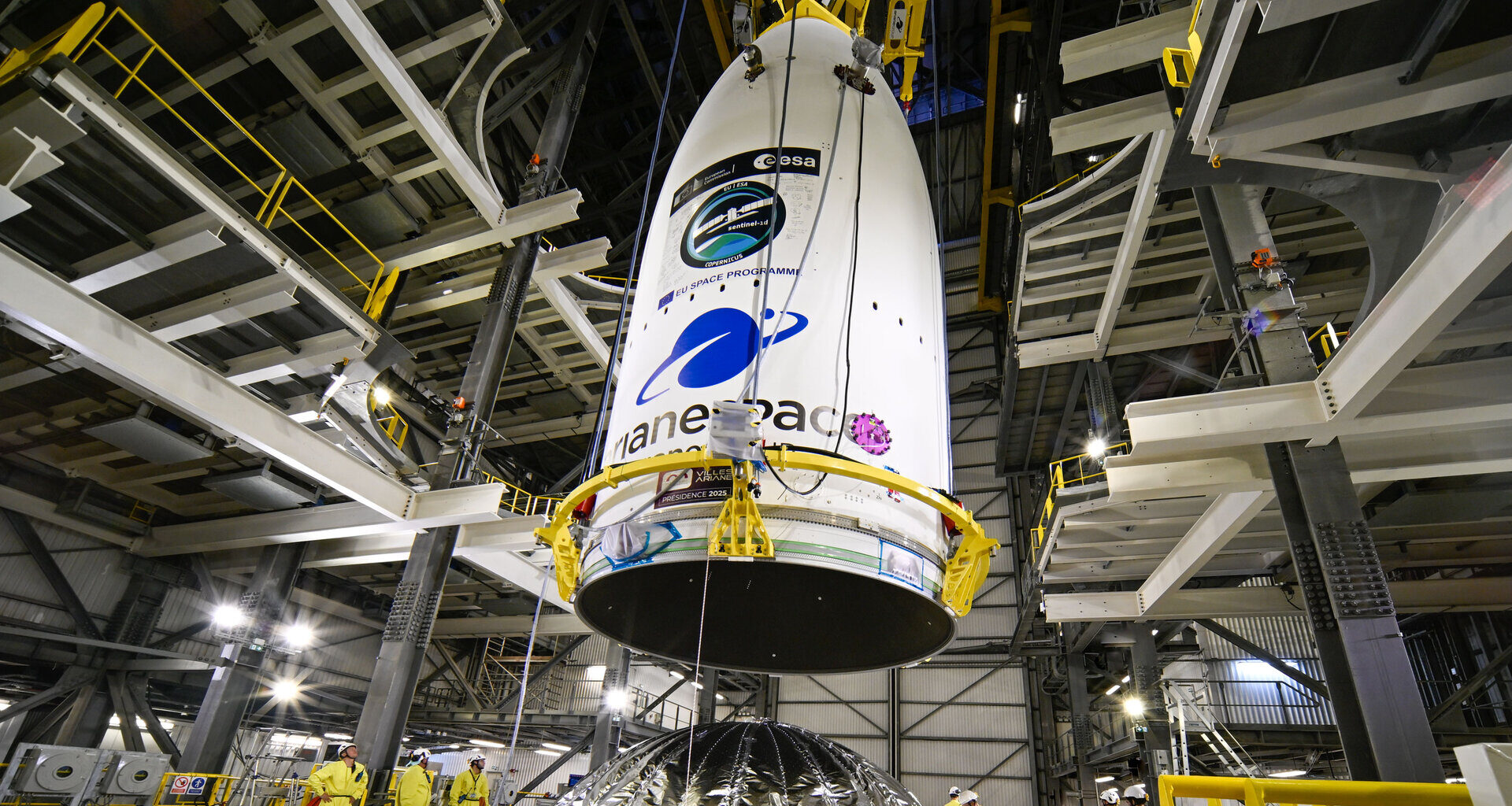Applications
03/11/2025
313 views
6 likes
The Sentinel-1D satellite is in position on the launch pad at Europe’s spaceport in French Guiana – ready for liftoff on board the Ariane 6 launcher.
The satellite will join the Sentinel-1 mission, to provide radar vision for the Copernicus Earth observation programme, shedding light on our changing world, enabling us to address the challenges of climate change, and supplying a wealth of radar imagery to aid disaster response.
Watch the launch broadcast on ESA Web TV, starting at 21:15 CET, Tuesday, 4 November, with liftoff expected at 22:02 CET.
Observing our changing world
The Sentinel-1 mission delivers high-resolution synthetic aperture radar (SAR) images of Earth’s surface whenever needed, in all weathers, day-and-night. This service is used by disaster response teams, environmental agencies, maritime authorities, climate scientists, and the wider Earth observation user community worldwide, who depend on frequent updates of critical data.
Sentinel-1 data contributes to numerous Copernicus services and applications, including Arctic sea-ice monitoring, iceberg tracking, routine sea-ice mapping and glacier-velocity measurements. It also plays a vital role in marine surveillance, such as oil-spill detection, ship tracking for maritime security and monitoring illegal fishing activities.
Additionally, it is widely used for observing ground deformation caused by subsidence, earthquakes and volcanic activity, as well as for mapping forests, water and soil resources. The mission is crucial in supporting humanitarian aid and responding to crises worldwide.
Cutting-edge technology for enhanced data
Sentinel-1D will join its twin in orbit, Sentinel-1C. When fully commissioned, it will replace Sentinel-1A, which has been in service for more than 11 years, well beyond its planned lifetime.
The Sentinel-1D and Sentinel-1C satellites will work in tandem, orbiting on opposite sides of the globe, 180° apart, to optimise global coverage and data delivery. Both satellites carry a C-band SAR instrument on board, together with an Automatic Identification System (AIS) instrument – so while capturing high-resolution imagery of Earth’s surface, the mission also improves detection and tracking of ships over maritime zones. When Sentinel-1D is fully operational, it will enhance AIS observations, including more data on vessel identity, location and direction of travel, and precise tracking. Sentinel-1D and Sentinel-1C are both compatible with the Galileo navigation system, as well as other Global Navigation Satellite Systems.
About Ariane 6
Sentinel-1D was launched on an Ariane 6 rocket, flight VA 265, equipped with two boosters for this liftoff. Ariane 6 is Europe’s heavy launcher and a key element of ESA’s efforts to ensure autonomous access to space for Europe’s citizens. Its modular and versatile design allows it to launch missions into low-Earth orbit as well as those destined to go much further into deep space. Standing more than 60 metres tall, Ariane 6 can weigh almost 900 tonnes when launched with a full payload.
Like

